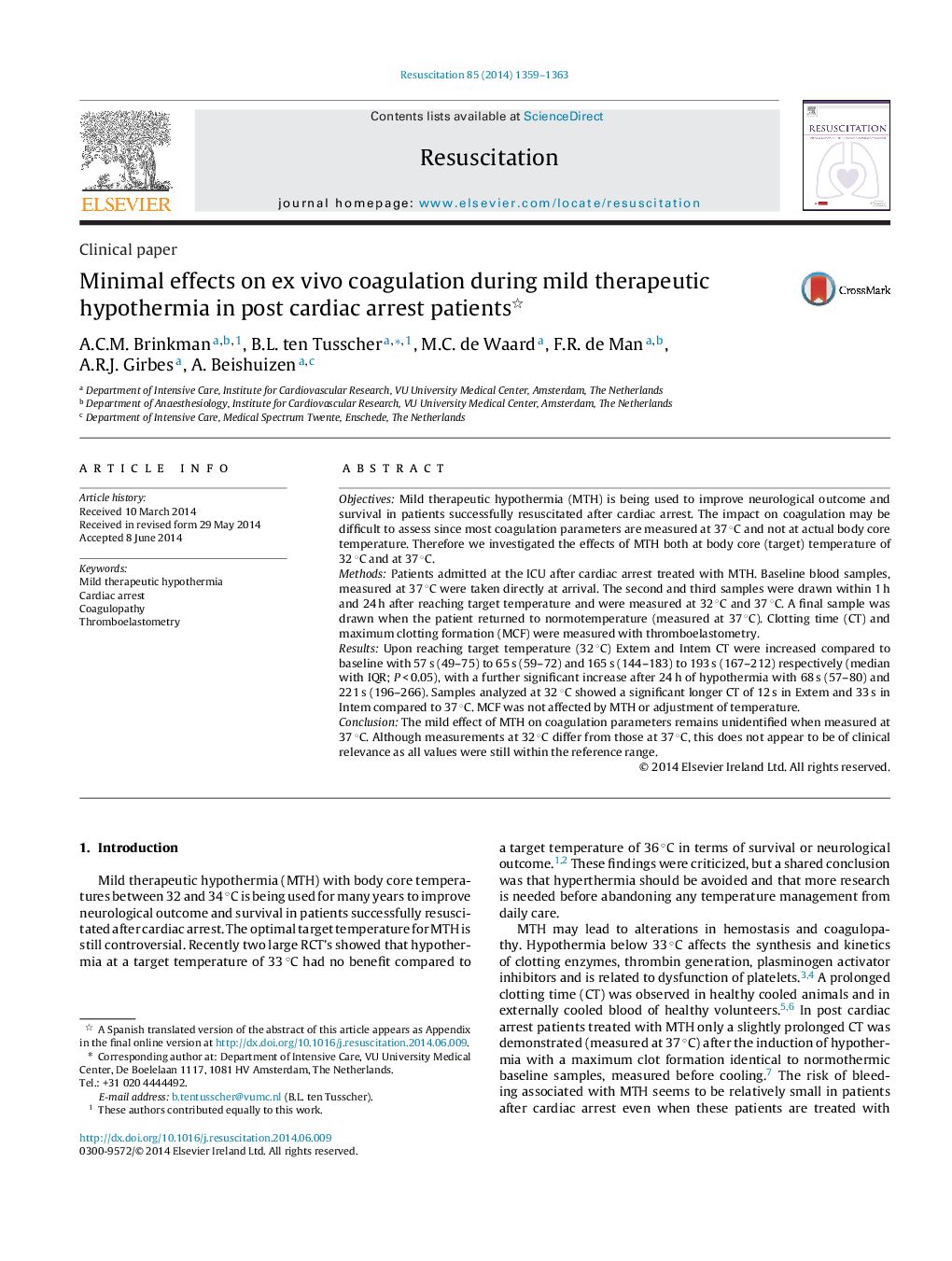| Article ID | Journal | Published Year | Pages | File Type |
|---|---|---|---|---|
| 5998349 | Resuscitation | 2014 | 5 Pages |
ObjectivesMild therapeutic hypothermia (MTH) is being used to improve neurological outcome and survival in patients successfully resuscitated after cardiac arrest. The impact on coagulation may be difficult to assess since most coagulation parameters are measured at 37 °C and not at actual body core temperature. Therefore we investigated the effects of MTH both at body core (target) temperature of 32 °C and at 37 °C.MethodsPatients admitted at the ICU after cardiac arrest treated with MTH. Baseline blood samples, measured at 37 °C were taken directly at arrival. The second and third samples were drawn within 1 h and 24 h after reaching target temperature and were measured at 32 °C and 37 °C. A final sample was drawn when the patient returned to normotemperature (measured at 37 °C). Clotting time (CT) and maximum clotting formation (MCF) were measured with thromboelastometry.ResultsUpon reaching target temperature (32 °C) Extem and Intem CT were increased compared to baseline with 57 s (49-75) to 65 s (59-72) and 165 s (144-183) to 193 s (167-212) respectively (median with IQR; P < 0.05), with a further significant increase after 24 h of hypothermia with 68 s (57-80) and 221 s (196-266). Samples analyzed at 32 °C showed a significant longer CT of 12 s in Extem and 33 s in Intem compared to 37 °C. MCF was not affected by MTH or adjustment of temperature.ConclusionThe mild effect of MTH on coagulation parameters remains unidentified when measured at 37 °C. Although measurements at 32 °C differ from those at 37 °C, this does not appear to be of clinical relevance as all values were still within the reference range.
